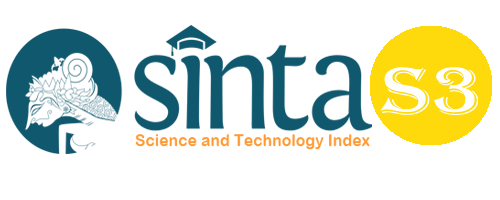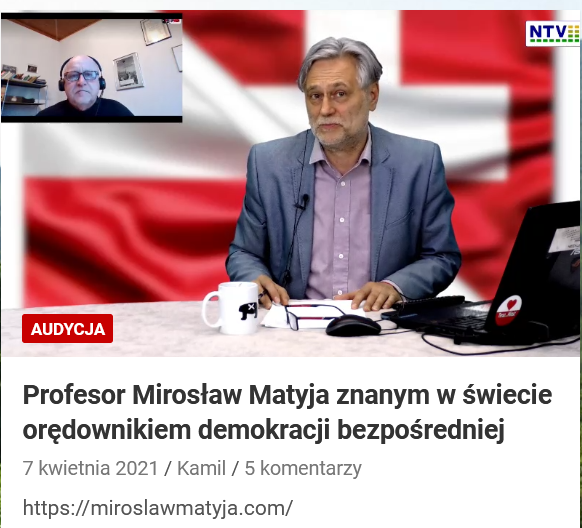The Viewpoint of the Sharia System on Digital Marketing during the Covid 19 Pandemic
Abstract
Shopping online as a new lifestyle is common in the Covid-19 pandemic. The emergence of various e-commerce platforms in Indonesian society has become a new alternative that facilitates the current pattern of people's shopping behavior. Many companies are experimenting with decentralized decision making and software to make new digital work cultures more effective and productive as working in a physical office. The existence of this pandemic can encourage consumers who do not like online shopping to finally switch to online shopping. With a phenomenon like this, the research was conducted with the aim of obtaining findings regarding the description of the application of digital marketing during the COVID-19 period seen through sharia viewpoint. This type of research uses descriptive analysis method, namely by analyzing independent variables without making comparisons and looking for correlations with other variables. From the research that has been done, it is found that every company or producer should pay attention to the condition of the products being marketed, especially in terms of Islamic law (halal and haram) and for online buying and selling transactions there is no element of usury (interest) and maisir (gambling). With the research that has been done, it is expected to increase the profit of the company or producer.
Keywords
Full Text:
PDFReferences
Ahmed, M., & Jan, M. T. (2015a). An extension of Aaker’s brand personality model from Islamic perspective: a conceptual study. Journal of Islamic Marketing, 6(3). https://doi.org/10.1108/JIMA-10-2014-0068
Ahmed, M., & Jan, M. T. (2015b). Applying the factor analytical approach towards Aaker’s brand personality model from an Islamic perspective. Malaysian Management Review, 50(1).
Arham, M. (2010). Islamic perspectives on marketing. Journal of Islamic Marketing, 1(2), 149–164. https://doi.org/10.1108/17590831011055888
Bara, A., et.al. (2021). The Effectiveness of Advertising Marketing in Print Media during the Covid 19 Pandemic in the Mandailing Natal Region. Budapest International Research and Critics Institute-Journal (BIRCI-Journal) Vol 4 (1): 879-886.
Cheng, J. H., & Liu, S. F. (2017). A study of innovative product marketing strategies for technological SMEs. Journal of Interdisciplinary Mathematics, 20(1), 319–337. https://doi.org/10.1080/09720502.2016.1258837
Choudhury, T., Debski, M., Wiper, A., Abdelrahman, A., Wild, S., Chalil, S., More, R., Goode, G., Patel, B., & Abdelaziz, H. K. (2020). COVID-19 Pandemic: Looking after the Mental Health of Our Healthcare Workers. Journal of Occupational and Environmental Medicine, 62(7), e373–e376. https://doi.org/10.1097/JOM.0000000000001907
Dumitriu, Militaru, Deselnicu, Niculescu, & Popescu. (2019). A Perspective Over Modern SMEs: Managing Brand Equity, Growth and Sustainability Through Digital Marketing Tools and Techniques. Sustainability, 11(7), 2111. https://doi.org/10.3390/su11072111
Haque, M. S., & Yamao, M. (2011). Prospects and challenges of Islamic microfinance programmes: A case study in Bangladesh. International Journal of Economic Policy in Emerging Economies, 4(1). https://doi.org/10.1504/IJEPEE.2011.038875
Hasan, M. (2020). Social marketing: an Islamic perspective. Journal of Islamic Marketing, 11(4), 863–881. https://doi.org/10.1108/JIMA-12-2016-0105
Hwangbo, H., & Kim, J. (2019). A text mining approach for sustainable performance in the film industry. Sustainability (Switzerland), 11(11). https://doi.org/10.3390/su11113207
Kim, R. Y. (2020). The Impact of COVID-19 on Consumers: Preparing for Digital Sales. IEEE Engineering Management Review, 48(3), 212–218. https://doi.org/10.1109/EMR.2020.2990115
Kotler, P. Shalowitz, J. Stevens, R. (2008). Strategic Marketing for Health Care.
Lin, C., & Lekhawipat, W. (2014). Factors affecting online repurchase intention. Industrial Management and Data Systems, 114(4), 597–611. https://doi.org/10.1108/IMDS-10-2013-0432
Machhi, J., Herskovitz, J., Senan, A. M., Dutta, D., Nath, B., Oleynikov, M. D., Blomberg, W. R., Meigs, D. D., Hasan, M., Patel, M., Kline, P., Chang, R. C. C., Chang, L., Gendelman, H. E., & Kevadiya, B. D. (2020). The Natural History, Pathobiology, and Clinical Manifestations of SARS-CoV-2 Infections. Journal of Neuroimmune Pharmacology, 15(3), 359–386. https://doi.org/10.1007/s11481-020-09944-5
Ningrum, P.A., Hukom, A., and Adiwijaya, S. (2020). The Potential of Poverty in the City of Palangka Raya: Study SMIs Affected Pandemic Covid 19. Budapest International Research and Critics Institute-Journal (BIRCI-Journal) Vol 3 (3): 1626-1634.
Pakpahan, A. K. (2020). Menyelamatkan Penjualan Ritel di Tengah Pandemi Covid-19. Covid-19 Dan Implikasi Bagi Usaha Mikto, Kecil, Dan Menengan, 1(April), 5. https://www.google.com/url?sa=t&source=web&rct=j&url=http://journal.unpar.ac.id/index.php/JurnalIlmiahHubunganInternasiona/article/view/3870&ved=2ahUKEwjP6MOZjZnpAhXFXCsKHRq9DFQQFjAAegQIARAB&usg=AOvVaw09WJeFinTVtA0eWEKaRwYS&cshid=1588557574299
Rastogi, E., & Khan, M. S. (2015). An analytical study of online advertising and its co- relationship with green marketing for facilitating sustainable marketing effectiveness. International Journal of Applied Research, 1(5).
Royle, J., & Laing, A. (2014). The digital marketing skills gap: Developing a Digital Marketer Model for the communication industries. International Journal of Information Management, 34(2). https://doi.org/10.1016/j.ijinfomgt.2013.11.008
Saura, J. R., Reyes-Menendez, A., & Filipe, F. (2019). Comparing data-driven methods for extracting knowledge from user generated content. Journal of Open Innovation: Technology, Market, and Complexity, 5(4). https://doi.org/10.3390/joitmc5040074
Savira, F., & Suharsono, Y. (2013). Theory and Application of Business and Management Principles. In Journal of Chemical Information and Modeling (Vol. 01, Issue 01).
Sihombing, E.H., and Nasib. (2020). The Decision of Choosing Course in the Era of Covid 19 through the Telemarketing Program, Personal Selling and College Image. Budapest International Research and Critics Institute-Journal (BIRCI-Journal) Vol 3 (4): 2843-2850.
Sugiyono. (2017). Metode Penelitian Bisnis (Pendekatan Kuantitatif, Kualitatif, Kombinasi dan R&DSugiyono. (2017). Metode Penelitian Bisnis (Pendekatan Kuantitatif, Kualitatif, Kombinasi dan R&D). In Metodelogi Penelitian.). In Metodelogi Penelitian.
Sulaiman, Y., Jamil, N. A. M., Othman, A. R., & Musa, R. (2020). The influence of green marketing, syariah compliance, customer’s environmental awareness and customer’s satisfaction towards Muslim consumer purchasing behaviour in kedah. WSEAS Transactions on Business and Economics, 17(2014), 195–204. https://doi.org/10.37394/23207.2020.17.21
Tahir Jan, M., & Lai Wan, H. (2018). Will Islamic Marketing Survive in Today’s World? ERA Journal ID #, 16(2), 40840.
Tan, K. S., Chong, S. C., & Lin, B. (2013). Intention to use internet marketing: A comparative study between Malaysians and South Koreans. Kybernetes, 42(6), 888–905. https://doi.org/10.1108/K-12-2012-0122
Zhu, Z., Zheng, Z., Zhang, F., Wu, Y., Trzaskowski, M., Maier, R., Robinson, M. R., McGrath, J. J., Visscher, P. M., Wray, N. R., & Yang, J. (2018). Causal associations between risk factors and common diseases inferred from GWAS summary data. Nature Communications, 9(1). https://doi.org/10.1038/s41467-017-02317-2
DOI: https://doi.org/10.33258/birci.v5i1.3671
Article Metrics
Abstract view : 138 timesPDF - 46 times
Refbacks
- There are currently no refbacks.

This work is licensed under a Creative Commons Attribution-ShareAlike 4.0 International License.

This work is licensed under a Creative Commons Attribution-ShareAlike 4.0 International License.

_.gif)

















_.gif)



